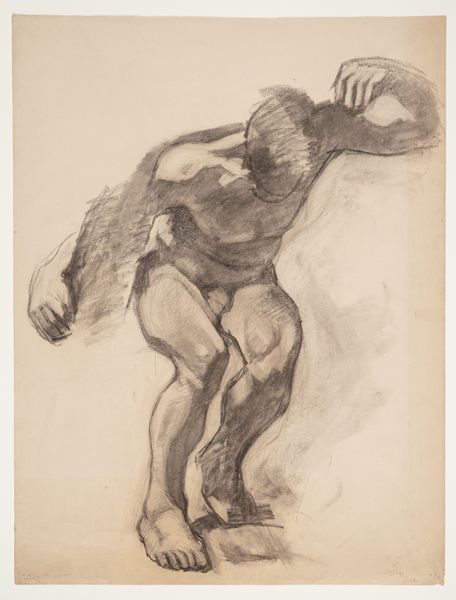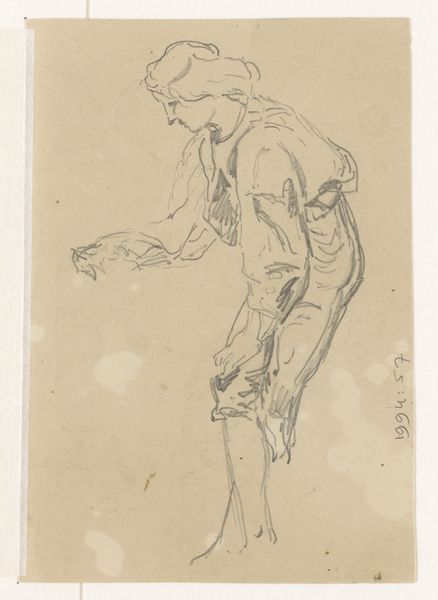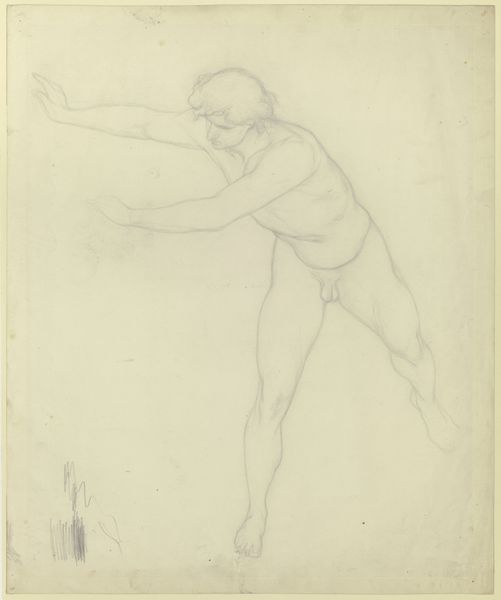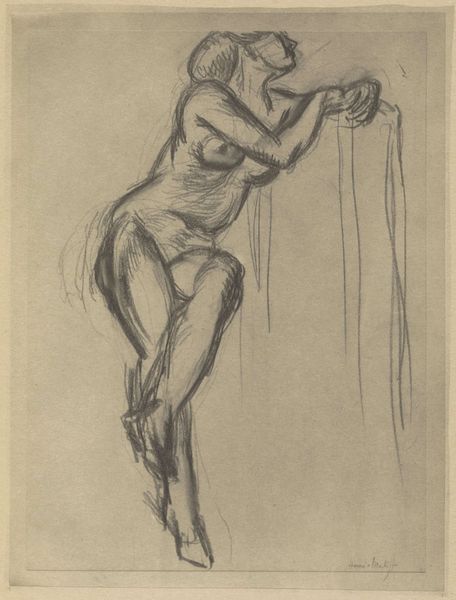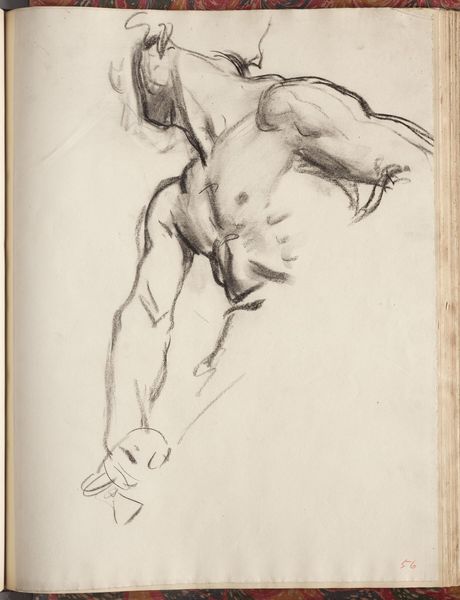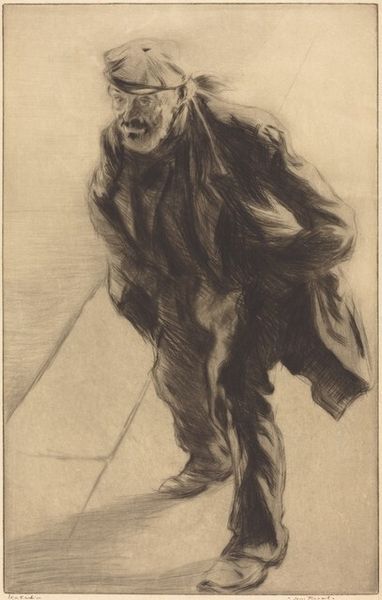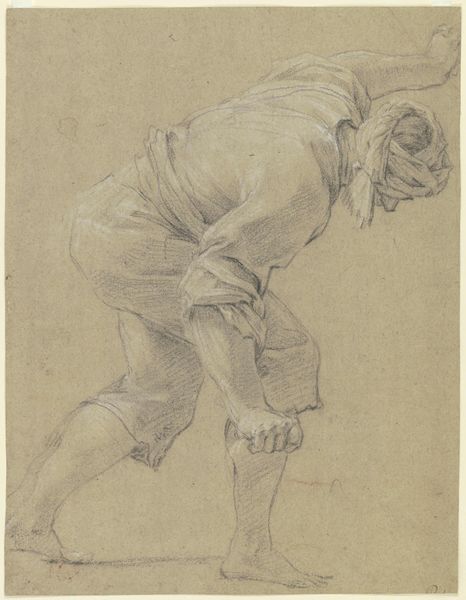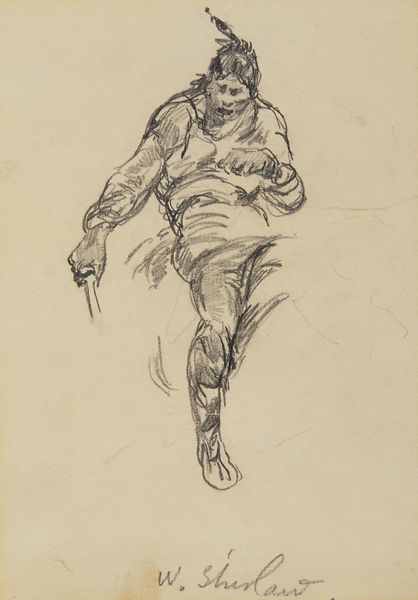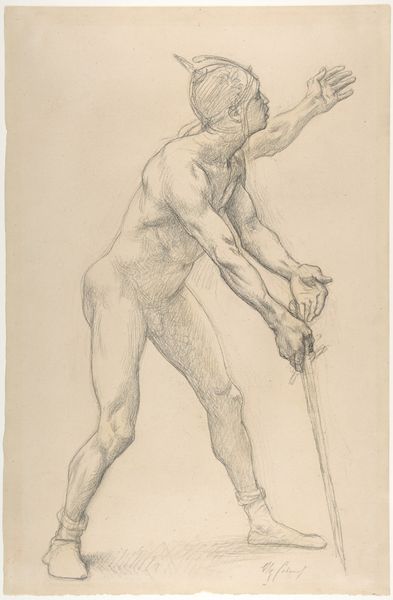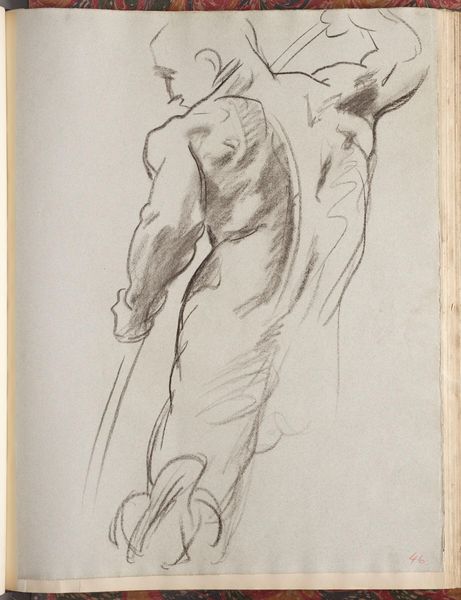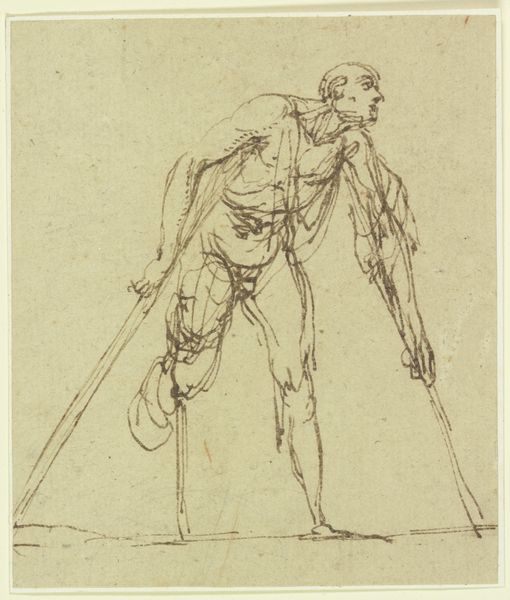
print, etching
#
pencil drawn
#
amateur sketch
#
toned paper
#
light pencil work
# print
#
etching
#
pencil sketch
#
personal sketchbook
#
ink drawing experimentation
#
pen-ink sketch
#
sketchbook drawing
#
sketchbook art
Dimensions: 150 mm (height) x 105 mm (width) (plademaal)
Editor: This is "Atlas, studie" by Oluf Hartmann, created in 1908. It's an etching, giving it a slightly faded, ghostly feel. It reminds me of quick sketches from life drawing classes. What can you tell me about it? Curator: The preliminary nature of the etching does invite comparison to academic sketches, yes. However, to understand it more fully, consider the broader cultural obsession with the idealized male form prevalent in the early 20th century, influenced by classical antiquity but reinterpreted through a social lens of athleticism and even nationalistic vigor. How do you think this context affects our viewing experience today? Editor: So, it's less a pure exercise in capturing anatomy and more of a statement about strength and perhaps even…Danish identity at the time? I'm curious about the printmaking process itself. Were there particular audiences for these types of etched studies? Curator: Absolutely. Printmaking made art more accessible to a wider public, circulating images and ideas beyond elite circles. The proliferation of such images also highlights a fascination with physical culture, intertwined with discourses of masculinity, class, and national health. Hartmann, by choosing etching, also positions himself within a longer artistic tradition. Editor: It's fascinating how a simple sketch can open up so many layers of social and political history! It makes me reconsider how seemingly individual artistic choices are always connected to larger trends and ideas. Curator: Precisely. Thinking about how art is both a product of its time and an agent shaping it, shifts the emphasis from individual genius to a more networked understanding of visual culture. What was initially seen as "simple", after all? Editor: That makes perfect sense. Thanks for pointing out these nuances and how historical context really enriches art.
Comments
No comments
Be the first to comment and join the conversation on the ultimate creative platform.

